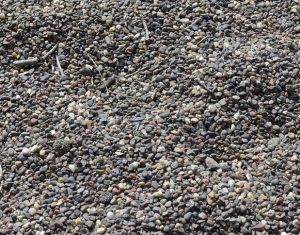 There’s much confusion and debate over whether the tarp should be larger than the tent. The answer will differ based on your requirements. If it’s a tarp for going over the tent to provide shelter from the rain and shade from the sun, then absolutely have a larger tarp.
There’s much confusion and debate over whether the tarp should be larger than the tent. The answer will differ based on your requirements. If it’s a tarp for going over the tent to provide shelter from the rain and shade from the sun, then absolutely have a larger tarp.
But when it comes to laying a tarp on the ground to be used as a tent footprint, you should never opt for a larger tarp. There are very good reasons as to why this is a bad idea which we will touch on now.
The Tarp Should Be Smaller Than The Tent
The idea for laying a tarp down on the ground beneath the tent is to protect the tent material from abrasions and holes. Which makes complete sense. A $10 tarp is a lot cheaper to replace than a $300 family tent that has holes in the base. So it makes complete sense to protect your assets right.
Placing a tarp on the ground protects the bottom of the tent from unexpected and small twigs, rocks and other various sharpies. Springing a hole in the base of your tent will certainly dampen the mood inside your tent when it rains.
So laying a tarp down protects the tent from general wear and tear from the friction between tent and earth. But you don’t want the tarp to be larger than your tent.
Don’t Let The Tarp Drown You
While also acting as a safeguard to rain, a tarp can also provide the opposite effect if not done correctly. Think about it for a minute. Imagine a 20 foot tarp laid on the ground with a 16 foot tent placed in the center.
No imagine the sky opening up and it starts bucketing down on your tent. Where does all the water flow?.
The water hits the tent and runs down the sides of the tent like it should. But then the water has no where to escape. It is met with a waterproof tarpaulin base where it cant escape. So the water starts to pool up around your tents base. Then it starts to seep under your tent.
Sure enough you have a tent with a waterproof bathtub style base. But having no tarp under your tent can result in tent material breakdown overtime. As the base of your tent is exposed to water, mud and dirt it will attract mildew and mold.
Which will shorten the lifespan of your tent and also eat away at the waterproofing on the tent.
So your best defense against the weather and for the longevity of your tent, have the tarp that is underneath your tent set to be a a couple inches shorter than the dimensions of your tent. This will prevent the water from being built up underneath your tent and potentially flowing into your tent’s doors. While also protecting it from getting punctures from small rocks and twigs.
What Tarp To Buy?
A good heavy duty tarp can cost anywhere up from $15. It depends on the size you need. A good camping tarp from Stansport can just about custom make your tarp to match your tent size. So you don’t have to do too much homework if you know the dimensions of your tent. Just remember, don’t go larger unless you want a pool of rain to wake you up at 2 am.
When A Larger Tarp Is Required
Many people wonder if it is a good idea to have a larger tarp when you are camping, specifically bigger than the tent that you are using. When you go camping, there is always the possibility that you could be experiencing a lot of rain. If that is the case, you will definitely want to bring a tarp.
Although most tents are going to be waterproof, if it is extremely heavy, there is a high probability that water can come through. That’s why bringing a tarp with you is a very good idea. Here are the reasons why you ought to have a larger tarp than the tent that you are going to be using.
Shelter From Weather & Sunlight
The main reason you want to bring an extra tarp (Besides the underlay tarp of your tent) is for shelter form rain and shade from the harsh sun.
If your campsite is large enough, there is no reason you can’t set up a tarp completely isolated form your tent. This can be your activities area, or the camp kitchen. Whatever the reason, you have a sheltered area in the event rain does occur.
Having a tent full of kids with non stop rain is never the ideal experience. So giving yourself a little extra sheltered area is certainly recommended if you are expecting rain.
As with rain, protection from the harsh UV rays form the sun is just as important. Exposure to the sun all day can be harmful. So it’s very handy to have your own sheltered area under the tarp. Especially if you have young kids camping.
Should You Always Take The Tarp Camping?
You should consider bringing one with you if you are staying for a few days. If you know it could rain, this is the best thing that you could do. It is almost impossible to predict, especially at certain times of the year, if it is going to be raining or not. Most of the companies that sell these are going to make them absolutely waterproof. You won’t have to worry about any of the rain coming in.
Should You Have One For Every Tent?
You should certainly consider having one for every tent that you are going to bring. It’s going to ensure that everyone that is with you is going to be dry. Especially when using a tarp as a tents footprint.
Most of the companies that sell these are going to have them in multiple sizes. You never know what type of tents that you are going to purchase, and by providing all of these, you will have the ability to protect each and every person that will be with you.
What If Your Tent Claims To Be Waterproof
If your tent has been certified as waterproof, there is likely little chance that the water will come through. While many tents you buy are waterproof, this does not last forever. Every season, it’s advisable to waterproof your tent manually.
This will increase the lifespan of your tent and keep you dry all year round. Again, not all new tents you buy will be waterproof. So it’s a god idea to waterproof it immediately anyways. It’s really a simple task that can be done in one afternoon. So don’t put it off if you value being dry while camping.
However, that’s not all. Some of them are going to have Windows, ones that can zip, and if you leave them down the water is going to get in. However, if you have a tarp that is over the top of the tents, you can have them down to get fresh air and not have to worry about the rain.
Camping and be fun, but the moment that the inside of your tents are extremely wet, you may actually have to go back home in order to get everything dry. That’s why having tarps with you is a good idea, but you need to know where to buy them and how to save money when you do.
Finding The Right Size Tarp?
It’s probably going to take half an hour to an hour to go through all of the different tarps that are currently being sold. You will want to segregate all of the ones that you find into those that are completely waterproof. You will then go through the different manufacturers that make them.
Look at reviews on places like amazon (link to Stansport tarp reviews) that people have left about the different ones they are selling. Those that have the highest amount of positive reviews of the ones that you will want to consider buying. You will also want to further segregate them based upon how much they are charging. You will eventually find one that is highly recommended that is also relatively inexpensive.
One Large Tarp Or Should You Get Several?
You should only get multiple tarps if you are traveling with a large group. For example, if there are going to be several groups of people, each one should have their own. If you have a family that is larger than you, your spouse, and two small children, then you will certainly want to get more than one tarp to accommodate everyone.
If you are bringing friends with you, you ought to have a couple extra just in case they don’t happen to have one. It may take a little bit of time, but once you have obtained all of them, you will know exactly how to purchase them the next time that you need a few extras.
Always Get One That Has A Guarantee
Make sure that the tarps that you get have a guarantee. Although most companies do offer an in-store guarantee, if you are purchasing these from a company that you have not heard before, there is a possibility that you may not be able to get your money back. If you can get your money back, this is going to be very beneficial should the unfortunate happen.
You may find that you are able to perhaps upgrade to something that is even better. Most of them give a 30 day moneyback guarantee, or at least a satisfaction guarantee, and you can take advantage of this if it ever comes down to needing to return them.
Regardless Of Whether You Need A Larger Tarp Than Your Tent, Bring One!
In conclusion, the tarps that you get, regardless of the size, always need to be bigger than the tent when going over. You can either drape them over the tent, or you can create a canopy under which all of the tents are going to be.
But when used as a tent footprint to better protect your tent and keep the water out, make the tarp slightly smaller.
If there are multiple people coming with you, multiple tarps are recommended. You can position them so that everyone will be protected from the rain. If you can get one large tarp, and several smaller ones that are all bigger than the tents that people are going to be using, there is really no way that anyone that will be with you is going to get wet on your next camping trip.

